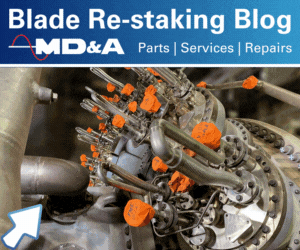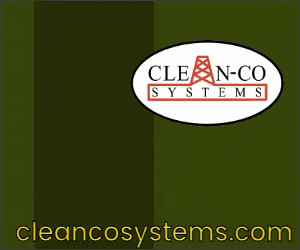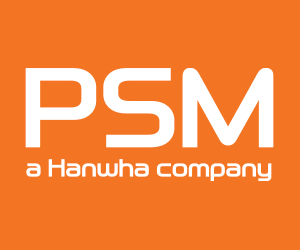
Fairview Energy Center
Owned by Competitive Power Ventures, Osaka Gas, and DLE
Operated by NAES Corp
1050 MW, gas-fired 2 × 1 7HA.02-powered combined cycle equipped with a GE D602 steamer and John Cockerill (formerly CMI) HRSGs, located in Johnstown, PaPlant manager: Irvin Holes
Enclosure improves air-compressor reliability in winter
Challenge. Fairview’s Atlas Copco air compressors were installed with special cold-weather packages that had a minimum inlet air temperature of –6F. However, during several severe cold-weather incidents, the plant was unable to keep the compressors running continuously, ultimately resulting in a full plant trip attributed to a loss of instrument air supply.
Solution. Initially, the plant tried using large heaters to add heated air to the compressor inlets, but that was unsuccessful. An alternative solution involved erecting scaffolding around all three compressors and wrapping the structure in plastic. This allowed the structure to use the exhaust heat from the motors to heat the enclosure (Fig 1 left). To prevent other unwanted issues and maintain an optimal temperature of 50 deg F, the plastic wrapping had to be adjusted by rolling it up and down as needed.

Results. When the temporary structure with plastic proved successful for two consecutive winters, the site team decided to make the solution permanent. Working with a local packaged steel building contractor, the team designed and constructed a permanent building around the air compressors. The building is heated using the waste heat from the compressor motors, resulting in no additional heating costs, and the temperature is controlled using a combination of roll-up doors and louvers (Fig 1 right).
During the initial design process, the maintenance team worked with its operations team and its compressor maintenance service contractor, Air Technologies, to ensure the building was constructed so as not to impede equipment maintenance or operation. The result has been continued plant operations during long, sustained cold weather without further compressor trips.
Project participants:
Rick Marshall, maintenance manager
Travis Rudick, maintenance technician
Jeff Dipaolo, maintenance technician
Joe Zahoran, maintenance technician
Bulk holding tank facilitates CCW system maintenance
Challenge. Maintenance personnel at Fairview recognized early on an inconvenience in the design of its closed cooling-water (CCW) system: The lack of a permanent holding tank for storing liquids during preventive or corrective maintenance. Whenever Fairview had to perform maintenance on its inlet strainers, pumps, or plate-and-frame heat exchangers, extra steps were needed to drain the glycol mixture into 300-gal portable totes.
A job as simple as cleaning a dirty pump strainer, or draining 1500 gal of glycol to open a heat exchanger, took significantly longer than necessary. Reasons included:
- The temporary totes, hoses, and portable diaphragm pump would have to be gathered by the maintenance team and brought to the job site.
- Transferring glycol out of the system into multiple containers, and then transferring it back, posed environmental spill concerns. Extra precautions, at added expense, were always implemented to minimize spills during fluid transfer.
Solution. Plant personnel determined that the optimal solution to both maximize efficiency and minimize leaks when performing maintenance would be to install a bulk holding tank along with permanent drain lines and a permanent transfer pump (Fig 2). An outside engineering firm worked with the plant engineer and operations team to develop the project, which included installation of a 3000-gal, double-wall holding tank shown in the photo.

Fluid handling equipment was designed to facilitate both the draining and reintroduction of glycol into the system. The design allows the draining of all three major maintenance areas by manipulating a couple of valves—thereby eliminating an environmental spill hazard and reducing significantly the time it formerly took to perform maintenance.

Results. The holding tank and pump skid were placed in a convenient location for plant personnel but away from vehicle and mobile-equipment travel corridors. All drain piping (Fig 3) was routed with safety in mind. Piping was routed away from walkways as much as possible. Where piping did cross walkways, pipe crossovers were built and installed to eliminate trip hazards in the walkways (Fig 4). Now with a simple change in valve lineup, the CCW system can be drained easily for maintenance.
The successful project has met expectations. The site was able to use the new holding tank during its most recent outage, which involved cleaning one of the heat exchangers. In the past, it took five portable totes to drain the unit. Today operators are able to easily operate the valves and pump glycol from the heat exchangers and into the holding tank. Not only was the turnaround faster, but material congestion and the potential for an environmental spill were eliminated.
Project participants:
Curtis Spear, operations manager
Jeff Lellock, plant engineer
Shawn Simmers, EHS coordinator
Travis Rudick, maintenance technician
Jeff Dipaolo, maintenance technician
Joe Zahoran, maintenance technician
Handrail screen protects against objects/tools falling off catwalk
Challenge. The top of both Fairview HRSGs has one specific landing zone for the monorail chain hoists along the east-side platform. The landing zone is a narrow catwalk (4 ft wide) suspended in midair with a clear path to ground. While loading and unloading material from the hook, objects could easily fall off the grating between the open handrails. The landing zone’s narrowness and open handrails (Fig 5 top) presented an inherent risk to personnel in the area below—even with the area on the ground being barricaded to prevent access.

Solution. Plant personnel engineered barriers to block the open space in the handrails, thus eliminating a large amount of the risk present. Stainless steel expanded metal sheeting was chosen for both its strength and simplicity. Along the lower edge, the expanded metal (Fig 5 bottom) was tucked between the toe kick and grating, resting on the structural beam work. It was also attached to the mid rail and underside of the top rail using band clamps. Rubber UV-resistant molded edging was used along the vertical sides of the expanded metal to prevent cuts and scrapes.
Results. The barricading has proven to mitigate risk atop the HRSGs, while adding a significant level of safety to the ground below. Working in the landing zone can be done now with greater confidence and less worry. It also offers protection for the worker who is simply carrying objects/tools through that zone while crossing those HRSG catwalks.
Project participants:
Rick Marshall, maintenance manager
Travis Rudick, maintenance technician
Jeff Dipaolo, maintenance technician
Joe Zahoran, maintenance technician
Brush upgrade for steam turbine/generator
Challenge. Generator brushes were chipping and breaking regularly (Fig 6), necessitating frequent brush checks and replacements, and causing plant technicians to work in close proximity to rotating and energized equipment more often than desirable.

Solution. The GE brush rigging (Fig 7 left) was realigned multiple times to try to correct the cracking, but that proved unsuccessful. The next approach was to have the rings trued and a Cutsforth EASYchange® Brush System (Fig 7 right) installed while the unit was offline.

A Cutsforth Brush Condition Monitoring System (Fig 8) also was installed, providing a less invasive way to monitor brush conditions, and eliminating the need to expose technicians to rotating and energized equipment. The monitoring system, which uses a wireless sensor on the brush spring, provides feedback on brush percentage remaining, mils of vibration, and brush temperature.

Results. Ring truing and EASYchange have corrected the problem. Fairview has not had issues with brushes chipping or breaking since implementation of the Cutsforth equipment.
The Brush Condition Monitoring System also has a safety benefit, as brush checks can be completed by simply checking the monitor shown in the photo—thereby minimizing technician exposure to the potential hazards associated with rotating and energized equipment.
Project participants:
Rick Marshall, maintenance manager
Scott Zungali, E&I technician
Adam Heming, E&I technician
Aaron Roberts, E&I technician
Chad Appleton, E&I technician









